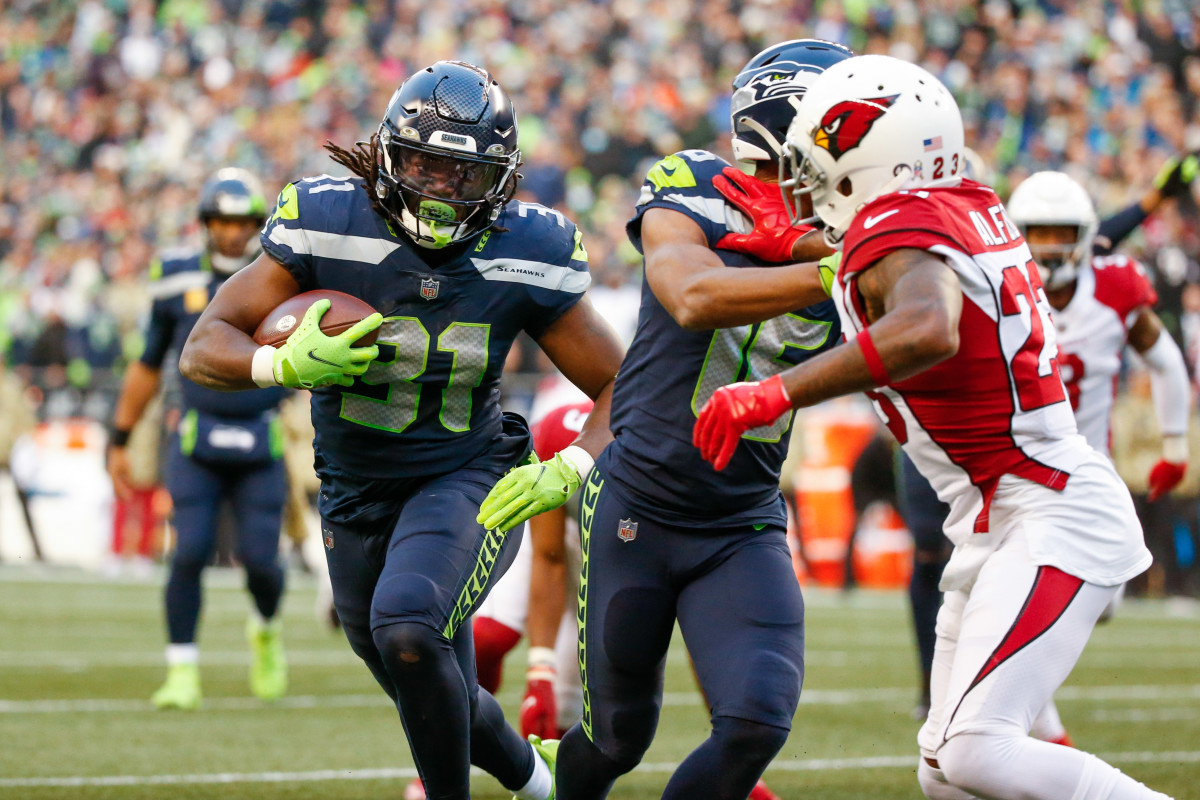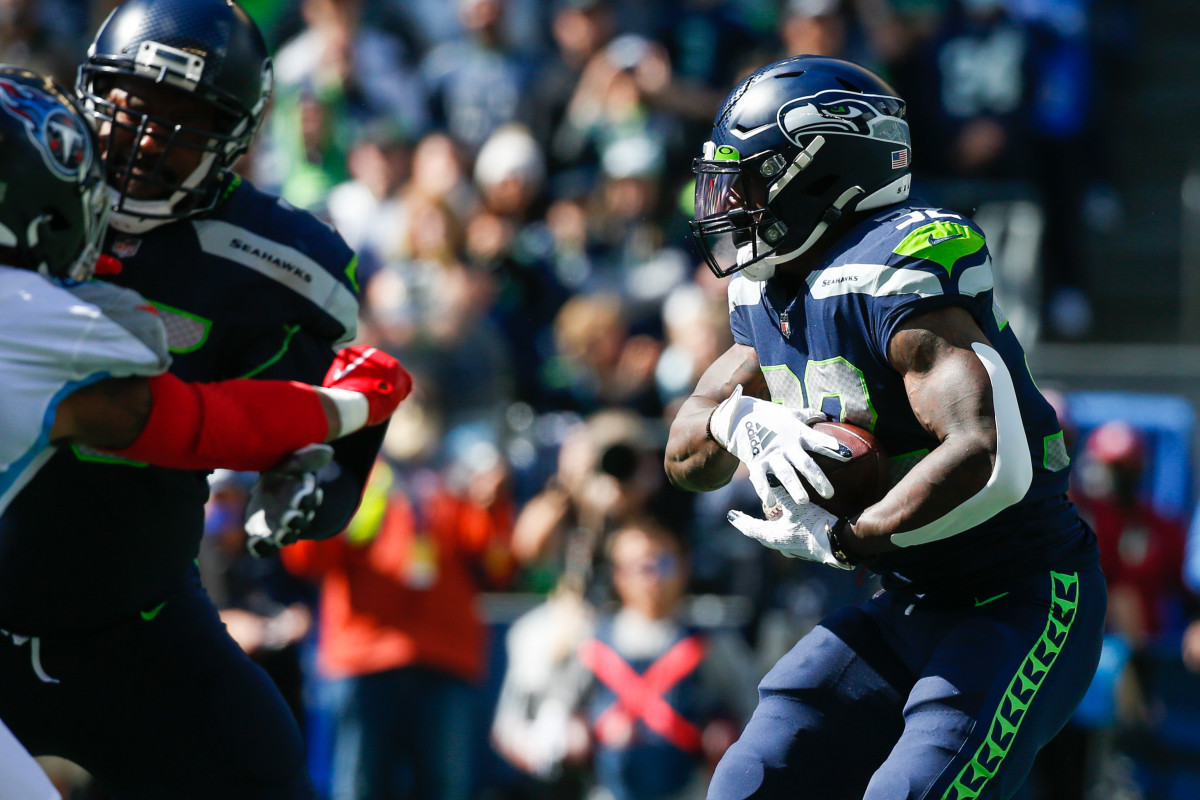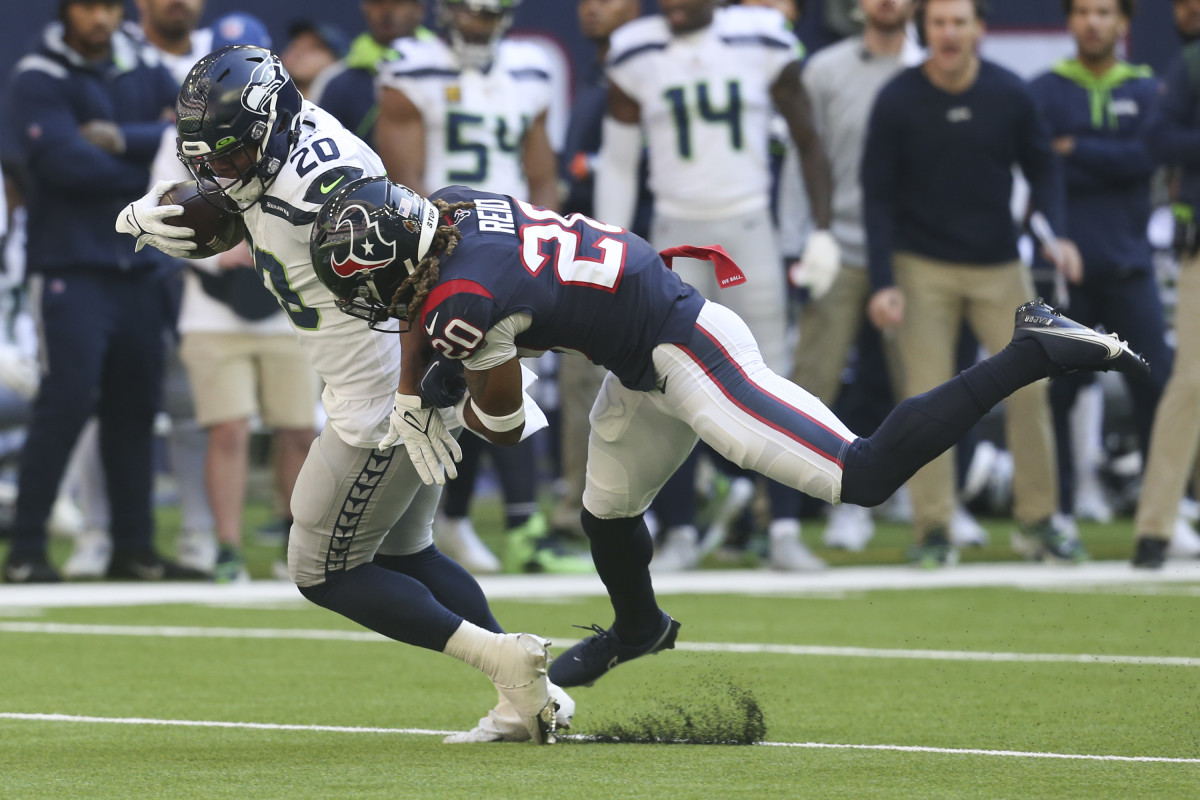Seahawks 2022 Offseason Position Preview: Running Back
Since the prime of Marshawn Lynch's career came to an end, the Seahawks have struggled to find stability in their running back room. Chris Carson has compiled a pair of 1,000-yard rushing seasons in that time, but his career has been hindered by several significant injuries. Similar health misfortunes have plagued former first-round draft pick Rashaad Penny, who's set to hit unrestricted free agency in March after putting together an impressive six-week breakout to finish the 2021 campaign.
With Carson recovering from neck surgery and the team's two leading rushers in 2021—Penny and Alex Collins—heading to the open market, uncertainty shrouds the running back position for Seattle once more. Let's go over what we know, what we don't know and what to expect this offseason.
What We Know

Leading the NFL in rushing yards (671), touchdowns (6), yards per carry (7.29), rushes of 20 yards or more (11) and yards after contact per attempt (5.27) from Week 14 onward, Penny took himself off the cusp of irrelevancy to near the top of the free agent running back hierarchy. The upside he possesses should attract plenty of potential suitors, most likely including the Seahawks.
Joining him on the market is Collins, who started six games for Seattle after Carson went down. In a Week 6 loss to the Steelers, he became the team's first running back to rush for 100 or more yards in a single game since 2019. But hip and glute injuries suffered during the same game—as well as a lingering abdomen issue that eventually landed him on injured reserve—made him virtually ineffective for the rest of the year.
Additionally, veteran Adrian Peterson is also an unrestricted free agent. The surefire future Hall of Famer appeared in just one game for the Seahawks, scoring his 126th career touchdown to tie Browns legend Jim Brown for 10th place on the all-time list before having his season ended due to a back injury. Penny partially attributed his late-season success to Peterson's presence and mentorship, reinforcing speculation about a potential move into the coaching sphere.
As for the current state of the roster, the Seahawks have five running backs under contract for the 2022 season: Carson, Travis Homer, DeeJay Dallas, Josh Johnson and Darwin Thompson. For now, the indication is that Carson will be able to resume football activities later this year, but an injury as serious and unique as his—especially at the position and intensity he plays—is an obvious cause for concern. Releasing him now would save $3.4 million towards the salary cap and incur a $3 million dead cap hit, but doing so after June 1 would save $4.9 million with a halved dead cap hit of $1.5 million.
The trio of Homer, Dallas and Thompson have all logged considerable time on active rosters to start their respective young careers and all offer similar profiles as third-down, change-of-pace backs with special teams value. Homer was arguably Seattle's best special teamer in 2021, taking a fake punt the distance in a Week 13 win over the 49ers and returning an onside kick for a touchdown to seal a Week 8 victory over the Jaguars. Meanwhile, Dallas carried the ball a total of 33 times and had his best game against the Cardinals in Week 11, recording 41 yards and a touchdown on eight attempts. Thompson spent the majority of the year on the Buccaneers' practice squad before landing back with the Chiefs for the posteason; he signed a future contract with the Seahawks on February 16.
Johnson, an undrafted signee out of Louisiana-Monroe, played some special teams in his pair of elevations from the practice squad and was signed to Seattle's active roster prior to its season finale. The organization is high on his ability and may envision a role for him in 2022.
What We Don't Know

Carson and Penny are the two biggest question marks here. If Carson is cleared to play, how will he look post-surgery? Are the Seahawks willing to wait and see, or will the $4.9 million they can eventually save by cutting him prove more beneficial if used elsewhere?
What is the financial ceiling for Penny this offseason? It's not likely, but there's a non-zero chance a team could fall in love with his skillset and outbid Seattle based on his potential. How far is general manager John Schneider willing to go to keep Penny in the Pacific Northwest?
Will competition be brought in to push the likes of Dallas and Homer, or is that already present with Johnson and Thompson? If Carson and Penny stay to headline Seattle's rushing attack, will there be an emphasis placed on building depth behind them in case one—or both—fail to stay healthy again? How would that dynamic work, and would there be a clear "lead back" in that scenario?
These are the biggest questions revolving around the Seahawks' running back room this offseason.
What to Expect

Carson's situation is tough to predict right now. On one hand, he's one of the game's most physically imposing talents at his position when healthy; and if he returns to form, he would provide Seattle with an explosive one-two punch if paired with Penny. But given the severity of his injury and the style of play that's made him so successful, banking on him getting back to where he was pre-surgery would be a high-risk venture. Frankly, the $6.4 million salary cap hit he carries feels like too much for the team to justifiably eat in its entirety—even if he's cleared for game action. There likely won't be clarity given on that front until the summer.
No matter what happens with Carson, fans should expect the Seahawks to make retaining Penny a fairly high priority on their to-do list. While it would be irresponsible to expect identical results to his rare five-week stretch over the course of a full season, the way he more or less changed the entire makeup of Seattle's offense in that time is impossible to ignore. Taking his well-documented injury history, limited track record and the market devaluation of the running back position into account, the Seahawks should be able to keep him in town on a one- or two-year contract worth anywhere from $2 million to $5 million per season.
The addition of more depth should follow shortly thereafter, whether it be via free agency or this year's draft. Seattle will not be short of options on either route.
